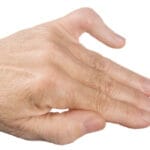What is Athletic Pubalgia?
Athletic pubalgia, commonly referred to as a sports hernia, is a painful soft tissue injury occurring in the groyne area. It frequently affects athletes engaged in sports that involve sudden changes in direction or intense twisting movements.
Though it can lead to a traditional inguinal hernia, a sports hernia itself is a distinct injury. An inguinal hernia occurs when abdominal tissue pushes through an opening in the lower abdominal wall, causing a painful bulge. In contrast, a sports hernia is a strain or tear of any soft tissue (muscle, tendon, ligament) in the lower abdomen or groin area.
Anatomy Involved
The soft tissues most commonly affected by sports hernias are the oblique muscles in the lower abdomen. The tendons that attach these muscles to the pubic bone are especially vulnerable. Additionally, the tendons attaching the thigh muscles to the pubic bone (adductors) may also be stretched or torn.
Causes
Sports hernias often result from activities that involve planting the feet and twisting with maximum exertion. This injury is prevalent in sports such as football, rugby, ice hockey, and wrestling.
Symptoms
- Severe pain in the groin area at the time of injury.
- Pain subsides with rest but recurs with sports activities, particularly twisting movements.
- Unlike inguinal hernias, sports hernias do not cause a visible bulge in the groin.
- Without treatment, the injury can lead to chronic, disabling pain.
Diagnosis
Clinical Examination:
- Tenderness in the groin or above the pubis during a physical examination.
- Pain during specific movements, such as a resisted sit-up, can indicate a sports hernia.
Imaging Tests:
- X-rays or MRI scans may be ordered to confirm the diagnosis and rule out other causes of pain.
Treatment Options
Nonsurgical Treatment:
- Rest and Ice: Initial treatment involves rest and ice application to reduce swelling and pain.
- PhysioTherapy: Starting about two weeks post-injury, physical therapy exercises to improve strength and flexibility in the abdominal and inner thigh muscles.
- Anti-inflammatory Medications: NSAIDs like ibuprofen or naproxen to reduce swelling and pain.
Surgical Treatment:
- Surgery: If nonsurgical treatments fail, surgery may be required to repair the torn tissues. This can be done via a traditional open procedure or an endoscopic procedure using a small camera to view inside the abdomen.
- Inguinal Neurectomy: In some cases, cutting a small nerve in the groyne during surgery can relieve pain.
- Rehabilitation: Post-surgery rehabilitation involves a plan to regain strength and endurance, with most athletes returning to sports within 6 to 12 weeks.
Surgical Outcomes
- More than 90% of patients who undergo surgery after nonsurgical treatments return to sports activities.
- Some patients may require additional surgery, such as adductor tenotomy, if pain persists in the inner thigh post-surgery. This procedure involves cutting the tendon that attaches the inner thigh muscles to the pubis, allowing it to heal at a greater length and release tension.
Understanding athletic pubalgia and its treatments is crucial for athletes to manage their condition effectively and return to their activities safely. If you suspect a sports hernia, seeking prompt medical advice ensures the best possible outcome.





